From May 21-25, 2025, the newly restored Grand Palais in Paris will host the seventh edition of Révélations - Biennale Internationale Métiers d’Art et Créations, one of the world’s most prestigious events dedicated to artistic craftsmanship. Why is it important? Because this year Italy will be the Guest of Honor Country, confirming the central role of Made in Italy in the global creative scene. The organization of the Italian participation is overseen by Elisa Guidi, coordinator of Artex, Tuscany’s Center for Artistic and Traditional Craftsmanship. Among the selected artisans, the name of Vera Belikova stands out, who for the Biennale Internationale Métiers d’Art et Créations has decided to bring Fragments of Belonging, a mosaic installation that links tradition and experimentation. The artist proposes a reflection on time, identity, but also on the relationship between memory and the future.
Vera Belikova is a Russian-born mosaicist trained in Italy who has established herself over the years as one of the most interesting voices in the field of contemporary mosaic. She graduated in 2017 from the Friuli Mosaic School, where she developed an artistic vision that links technique and openness to research. Already in 2015 as a student, she organized a group exhibition of 25 young mosaicists at the Manni Art Gallery in Venice. She later made two mosaic sculptures in Apulia, one of them as an invited artist of the Apulia Land Art Festival. In 2018, she won the Sprech Agora Design Contest with a pouf embellished with mosaic inserts, then exhibited at the Salone del Mobile in the Brera Design District. Belikova has also collaborated with Giulio Candussio and designer India Mahdavi on a mosaic floor displayed at the Homo Faber exhibition in Venice, and signed a sculpture for the Cavallerizza Irreale in Turin. She took part in the European project CraftLab, supported by the Fondazione Pino Pascali and the European Union, and exhibited in 2020 at the exhibition Nelle mani delle donne at Superstudio Più during Milano Design City. Her path is marked by a constant hybridization of craft, design and innovation. We see this clearly in Present Tense, a vertical mosaic clock that questions the role of traditional techniques in the accelerated world of design. The white porcelain stoneware is set against the shadows between the tiles, while the self-supporting iron and PVC structure conceals a perfectly integrated mechanism inside. The work is a proposal to the contemplation of time, but also a statement of the vitality of craftsmanship.
And it is precisely along the lines of the contemplation of time, and the vitality of craftsmanship, that Fragments of Belonging, a project that will be exhibited at Révélations 2025, fits in.
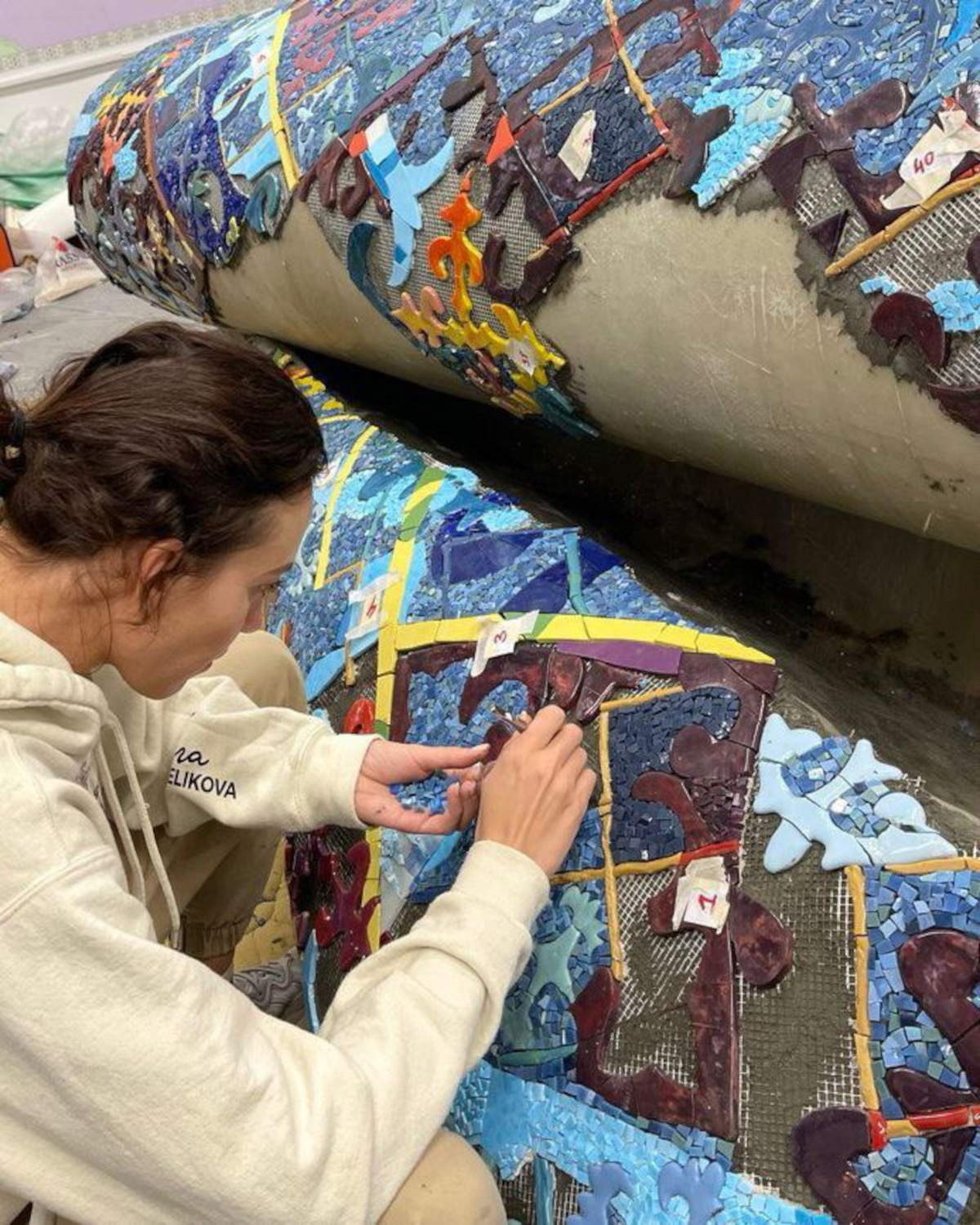
It is a work balanced between memory and the future. Fragments of Belonging, a mosaic installation, unfolds through two opposing columns that stage a link between past and present. It is a project that interrogates time, transformation and the very concept of belonging. But what does it consist of? On the left, the memory column stands out for its warm, earthy tones while its surfaces tell a narrative made of faded traces: they are almost illegible texts, references to the fragility of collective memory.
The materials chosen also speak for themselves: they are old salvaged Italian roof tiles, worn out by time and weathering juxtaposed with cogolo, a semi-burnt limestone used today only in restorations. A choice that evokes a sense of care and silent survival and that recalls the invisibility of things that endure. On the right, the column of the present stands out instead with its sharp black and white, interrupted only by bursts of color. Broken letters form, dissolve, and restore the instability of the contemporary. Here the material changes face. The porcelain stoneware slabs produced by Graniti Fiandre define a homogeneous, intense surface, capable of passing through matter in depth. Some will be made with ACTIVE SURFACES®, cutting-edge technology capable of fighting bacteria, viruses and pollutants. An innovation that reinforces the dichotomy between guarded memory and designed future.
The two columns, in their compositional tension, thus embody opposing forces. We speak of stability and disintegration, order and fragmentation. Instead, the different thicknesses of the tiles accentuate the visual and tactile contrast, thus presenting an experience designed to be traversed, touched, questioned. Connecting them, a recurring element: a mosaic texture already used by Vera in the Present Tense project, the vertical clock symbolizing time. The columns will rest on metal bases: a one-centimeter platform and a central tube will ensure structural stability and aesthetic continuity. Light, both natural and artificial, will instead flow over the surfaces sculpted by the mosaic, capable of generating changing reflections. Fragments of Belonging does not represent: it interpellates. It asks what it means to belong, what we choose to keep, and what we are willing to transform. The columns thus invite us to pass by, to pause, to recognize ourselves in the fragments of matter and history that seek meaning within the flow of time.
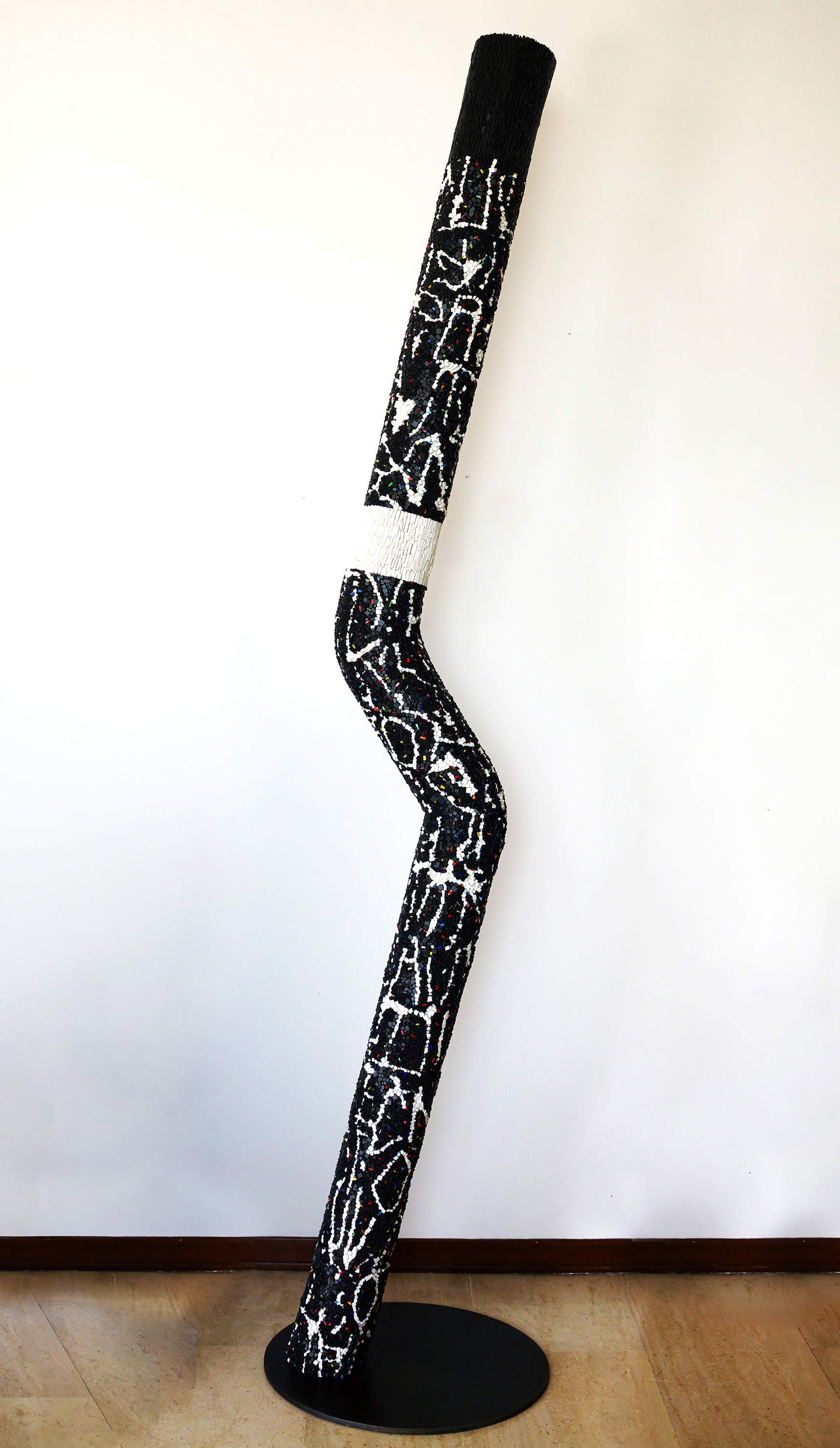
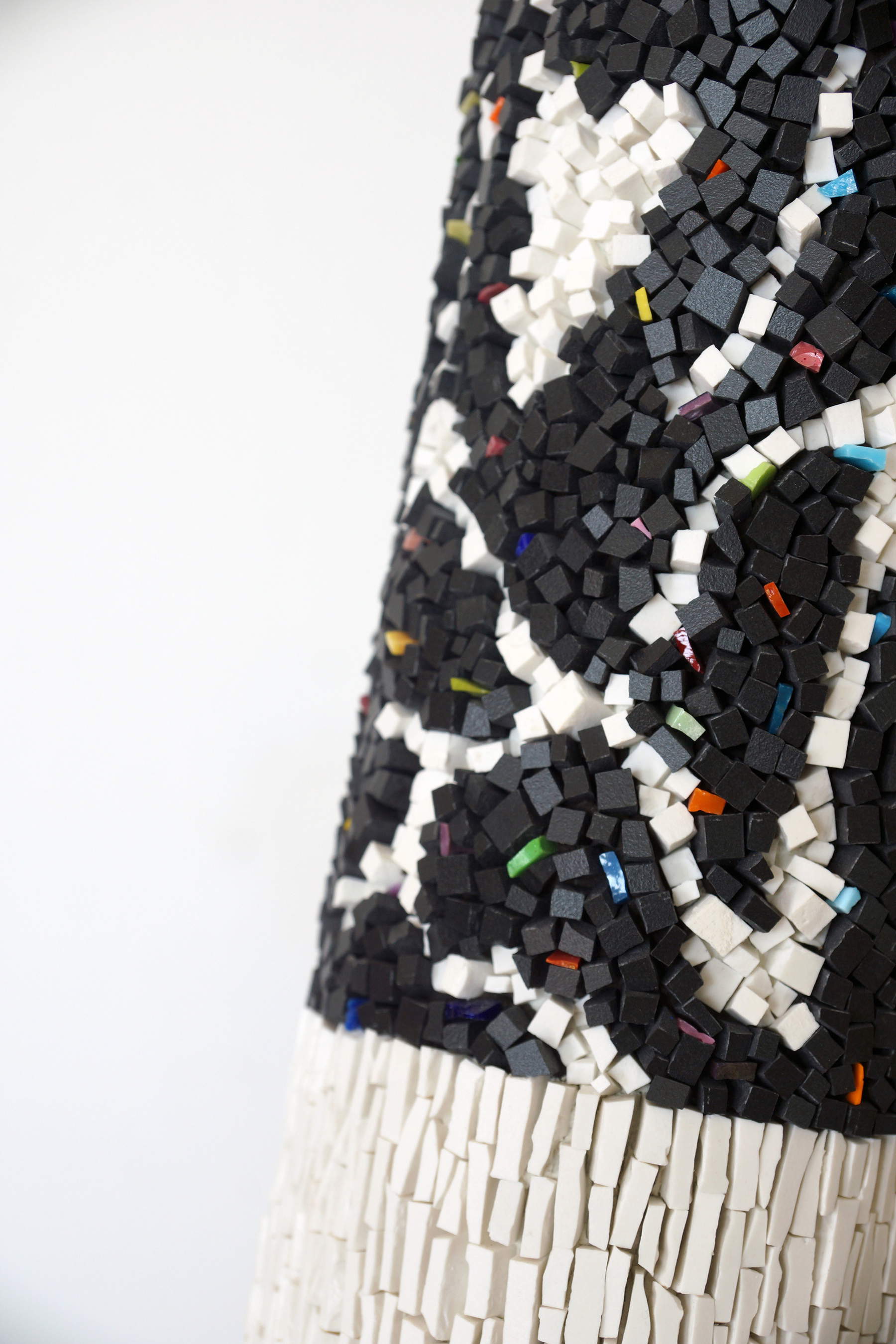
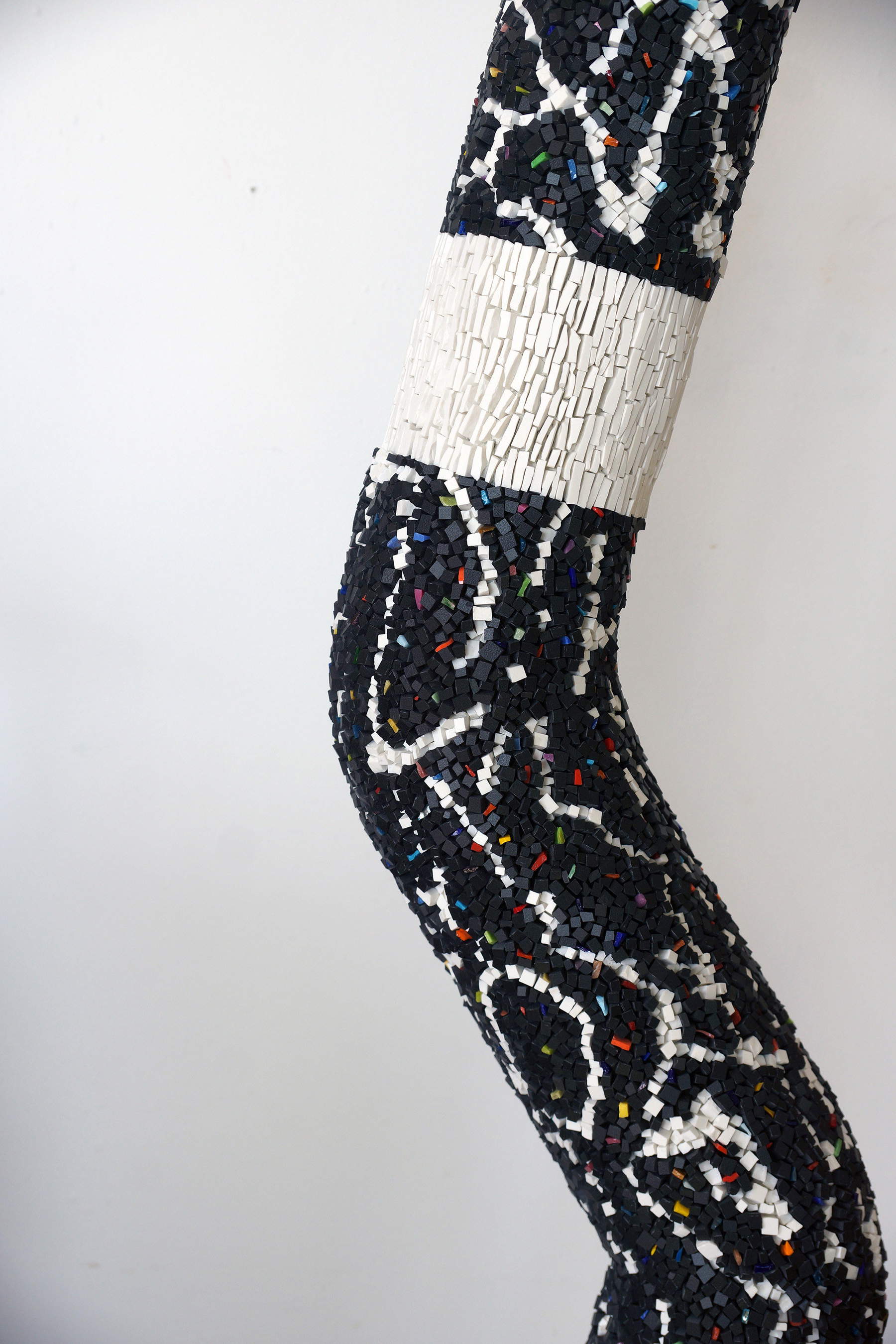
Parallel to the project designed for Révélations, Belikova is engaged in international initiatives that interpret mosaic as a tool for dialogue between cultures. Her most recent works include a sketch for the redevelopment of a 1970s market in Almaty, Kazakhstan, a city that, like many in the former Soviet Union, harbors a large but still under-appreciated mosaic heritage.
Indeed, with the end of the USSR and the demise of public commissions, the figure of the mosaicist suffered a major downsizing. Yet despite the crisis, the population’s interest in mosaic did not wane. While in Italy mosaic art is often perceived and associated with a time long gone, in Central Asian countries mosaic continues to be part of the everyday urban landscape. Just within the scenario, the new intervention on the market facade could therefore embody an opportunity to give new impetus to the tradition.
The installation of the work Threads of Time / Threads of Time, created together with mosaicist Kseniya Khalyavko, also destined for Almaty, is also planned in the coming months. The 2.2-meter-tall sculpture is entirely covered in mosaic with custom-made ecosmalti and is dedicated to traditional Kazakh symbols, reinterpreted with a contemporary visual language. Triangles and rhombuses, amulets of protection and fertility, unite with the motif of the Tortkulak, a decorative cross found in traditional carpets and architecture, a symbol of continuity. The composition, developed as a vertical carpet, thus ties the theme of spirituality and national identity into a layered visual narrative. The color palette also has a definite meaning: red and blue evoke prosperity, green evokes renewal, and blue evokes the infinite sky. Among the most evocative elements also appears the muyiz, a stylized symbol of ram’s horns, linked to abundance and security. The mosaic uses high-density artistic glazes, opaque glass with intense colors rooted in ancient Roman tradition.
Lending chromatic exclusivity to the mosaic in Fili del Tempo / Threads of Time were glazes from two historic kilns in Friuli: that of Mario Donà and sons, active for three generations, and the Morassutti Mosaici kiln. The first, directed today by Marco Donà, has inherited a craftsmanship knowledge that has enabled it to encode more than 150,000 shades, still obtained by hand using traditional methods and kilns fired at 1300 degrees. The second, with a more experimental and environmentally friendly production, provided glazes with irregular surfaces and vibrant hues, capable of fitting perfectly with the art project, including decorations inspired by Kazakh motifs, created specifically for the work with the use of metal molds. Also crucial was the participation of top graduates of the Friuli Mosaic School in Spilimbergo, the only institute in the world that has been training professionals in mosaic art for more than a century. Underlying their work, in addition to technical expertise, is a deep knowledge of color theory and its visual interactions, the legacy of a tradition rooted in Byzantine mosaic and pointillist painting. For the realization of the work Threads of Time / Threads of Time, the collaboration with MAPEI, an Italian company of international reference in the production of chemical solutions for the building industry, was also fundamental. Always focused on innovation and sustainability, MAPEI adopts a systemic approach that combines quality of materials, attention to the environment and enhancement of architectural and cultural heritage. For Threads of Time, products capable of ensuring reliability over time, resistance to weathering and maximum grip on complex surfaces were chosen. These include Kerabond T, a high-performance thixotropic cementitious adhesive reinforced with hydraulic binders and specific additives. Its formulation is designed for vertical applications, avoiding the risk of slipping of mosaic tiles during installation. Mixed with Isolastic, a MAPEI polymer latex with very high elasticity, Kerabond T becomes a class C2E S2 adhesive according to EN 12004, thus ensuring perfect adhesion even on unconventional substrates subject to stress. The surface of the sculpture reflects, in the iridescent light of the tiles, a shared vision: that of an art that also endures, renews and builds itself through the excellence of the material.
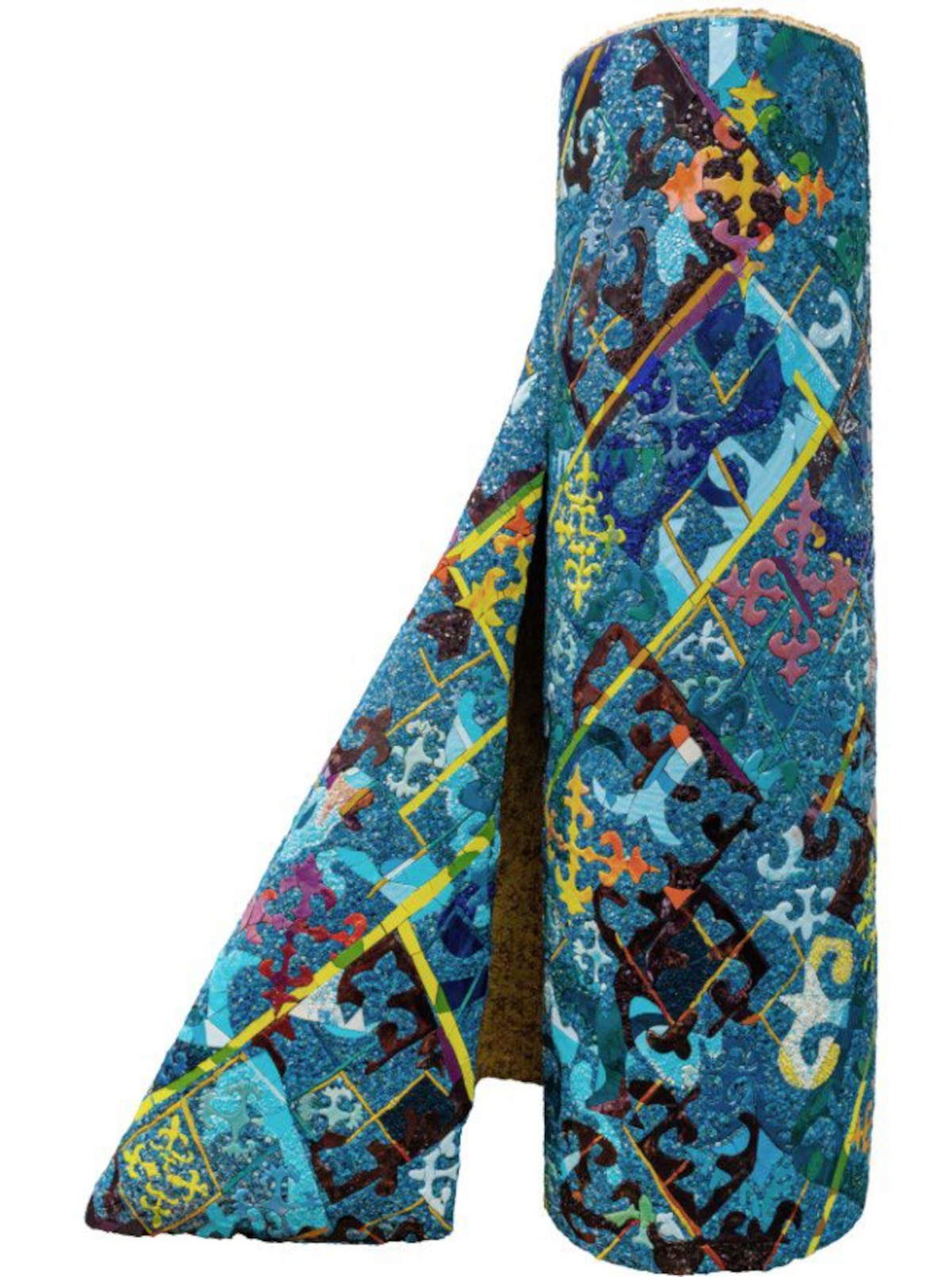
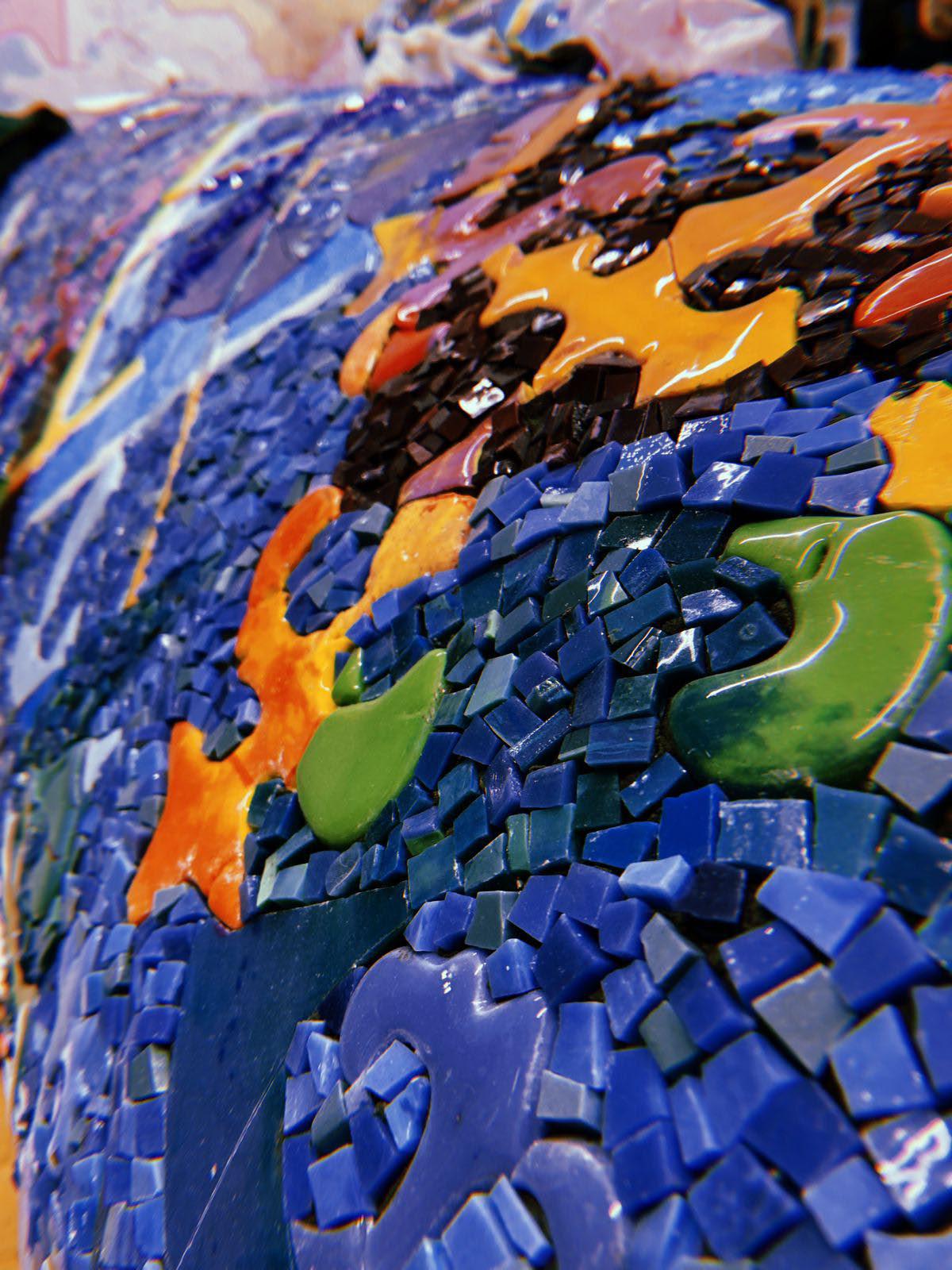
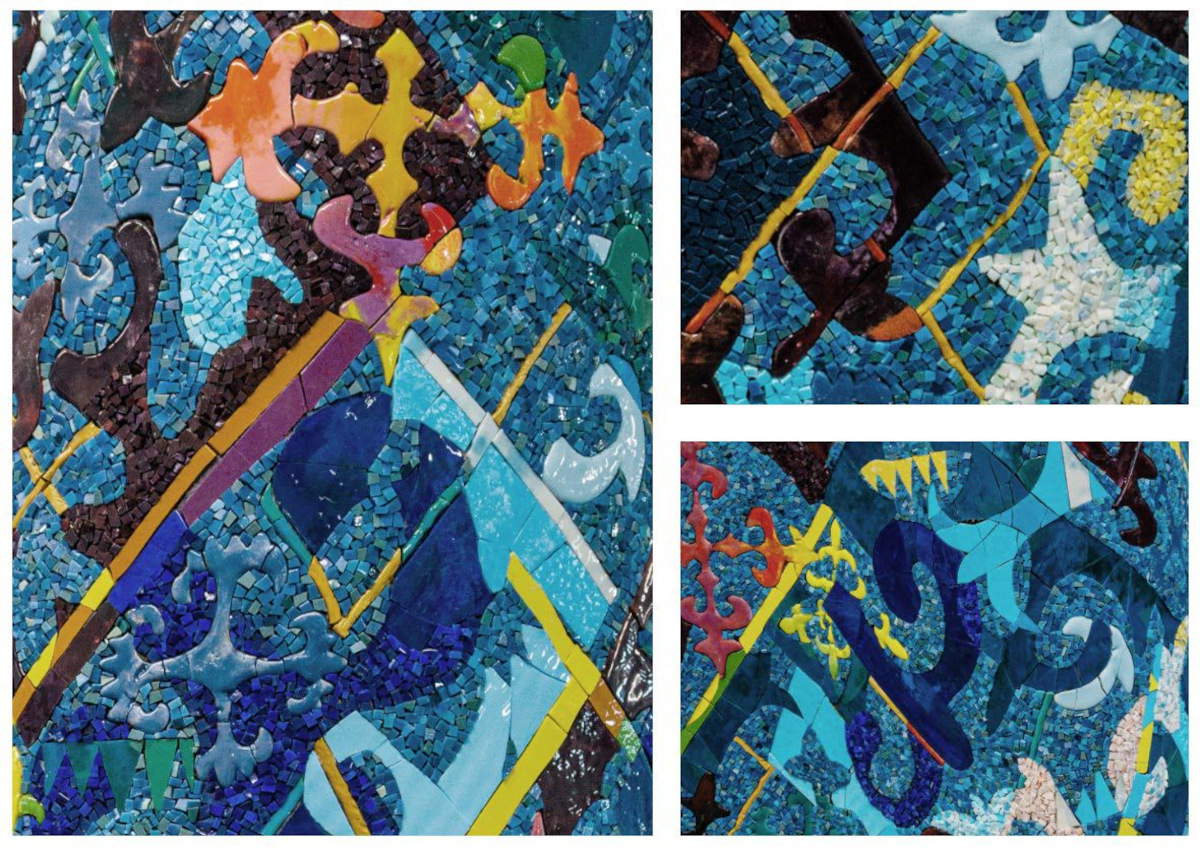
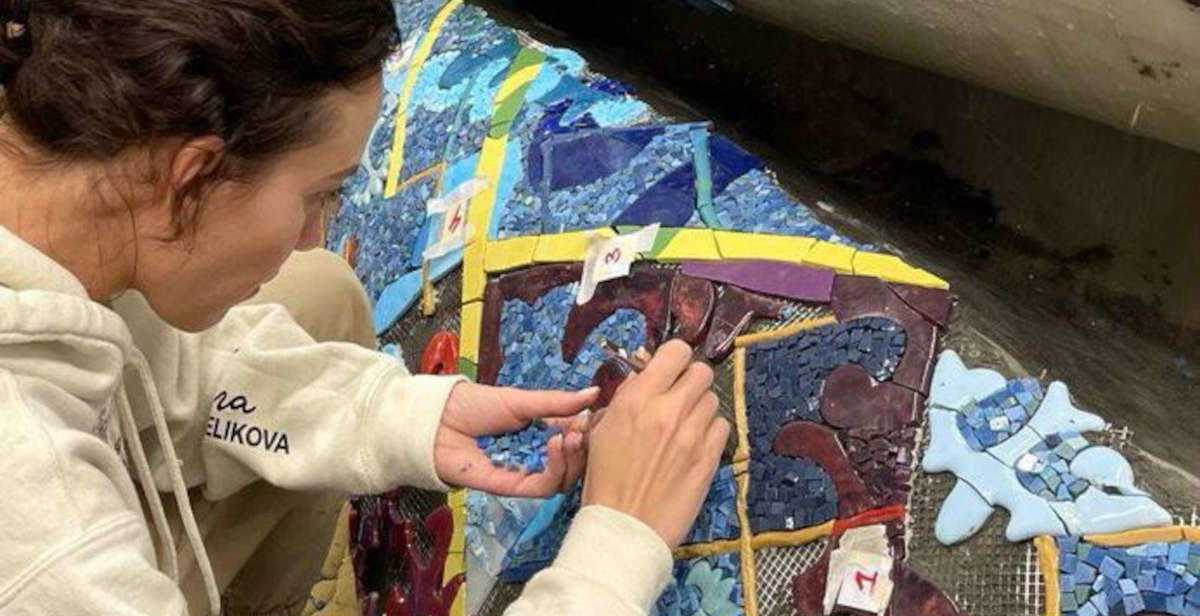 |
| Vera Belikova at Révélations 2025: the mosaic between memory and future |
Warning: the translation into English of the original Italian article was created using automatic tools. We undertake to review all articles, but we do not guarantee the total absence of inaccuracies in the translation due to the program. You can find the original by clicking on the ITA button. If you find any mistake,please contact us.